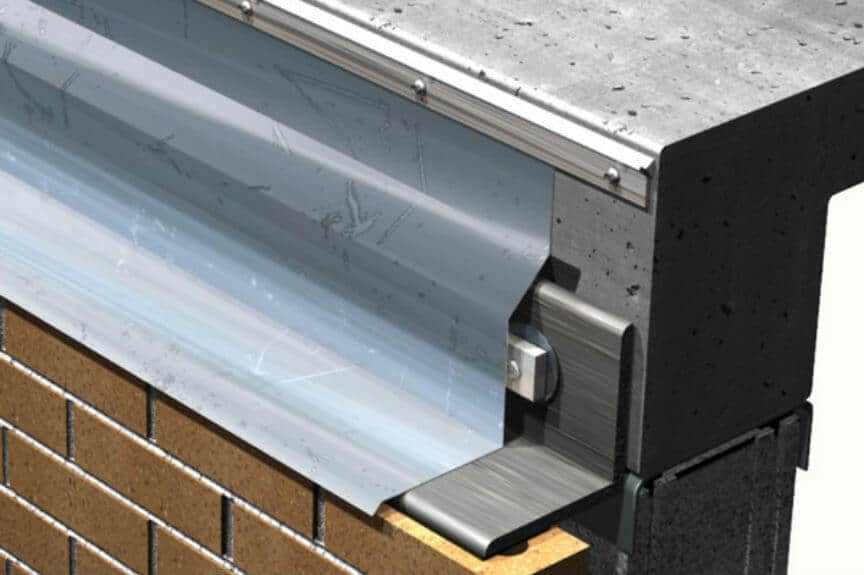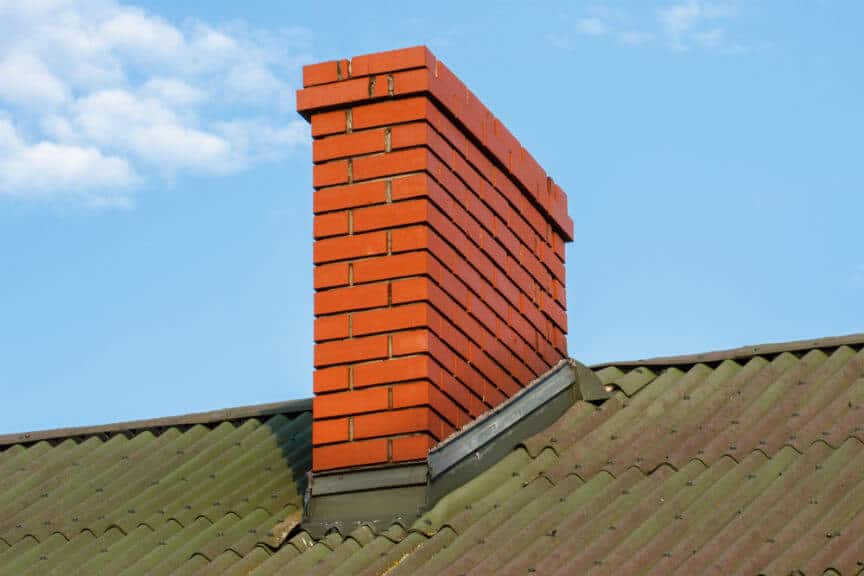Giovanni Valle is a licensed architect and LEED-accredited professional and is certified by the National Council of Architectural Registration Boards (NCARB). He is the author and managing editor of various digital publications, including BuilderSpace, Your Own Architect, and Interiors Place.
When building materials intersect, there is the potential for water infiltration. Flashing is a thin material used to prevent water penetration by providing a seal at joints exposed to the weather.
There are two general types of flashing used in masonry construction. The first is external flashing (exposed flashing), and the second is internal flashing (concealed flashing). External or exposed flashings prevent moisture from penetrating into masonry walls where the wall intersects the roof. Internal flashings, or concealed flashings, catch water that has penetrated a masonry wall and drain it through weep holes to the outside of the wall.
Additionally, internal flashing is required at any location where the cavity is interrupted, such as the heads of windows or doors, and window sills.
Flashing is also categorized by the material that it is made from, as well as the location of the flashing within a building structure, such as at roof valleys or at chimneys.
Flashing Materials
Materials used for flashing include copper, galvanized steel, lead, aluminum, stainless steel, bituminous sheet material, and plastics.
In some cases a combination of these is used, such as galvanized steel covered with bitumen that prevents corrosion of the steel when in contact with mortar.
Concealed or external flashing is typically made from sheet metals, bituminous-coated fabrics, plastic, or other waterproof membrane materials.
Exposed flashing is commonly made from aluminum, copper, galvanized steel, zinc, lead, or terne. Sheet metal flashings are the most durable, thus their use in external/exposed conditions.
Common Flashing Locations
Some common locations for flashing include roof ridges or valleys, around chimneys, at masonry parapets, gravel stops, and at the head of openings or water tables.
Joint flashing locations generally include expansion and contraction joints as well as the gaps created at the intersections of different materials.
Since these locations generally tend to be subjected to greater movement, flashing needs to be installed in such a way that it allows for this fluctuation.
Roof Ridges and Valleys
Flashing at roof ridges or valleys can be either concealed or exposed. They are typically attached with screws and neoprene washers on top or in between shingles, depending on whether they are exposed or concealed.
Most installations involve the weaving of flashing sheets between roofing shingles. Cleats with a vee crimp can be used in exposed valley flashing conditions. Crimps are usually 1″ (25 mm) in height to form a splash diverter.
Lap lengths of flashing at ridges are typically 4 inches (100 mm). At valleys, lap lengths vary depending on the slope and material of the roof.
At slopes of 6:12 or greater, a 7-inch (180 mm) minimum lap length is typically used, while at slopes less than 6:12 a 10-inch (255 mm) minimum lap length is used. Wood shakes and other shingles require a minimum lap length of 11 inches (280 mm).
Flashing at Roof Penetrations
Whenever the continuity of a roof covering system is penetrated, flashing is required to prevent water infiltration through the opening.
Some common locations are where vent pipes, roof drains, roof vents, or skylights are installed. In addition, any future columns or steel angles used to support signs, flag poles, or other items require flashing.
Chimneys at Roof Intersection
Chimney or fireplace flashing is typically installed at the intersection with the roof of a building. Cap flashing applied to the face of the chimney is used along with base flashing at the point of intersection with the roof.
Base flashing usually extends up the chimney wall at least 4 inches (100 mm) with minimum sidelaps of 3 inches (75 mm). Cap flashing overlaps base flashing 4 inches (100 mm) and also extends into masonry 4 inches (100 mm).
Typical components used in chimney flashing include an underlayment, a metal saddle, step flashing, counter flashings, mortar, and solder to bond the metal workpieces.
Masonry Parapets
Masonry parapet walls are usually detailed with base flashing over a cant strip at the point of intersection between the parapet wall and the roof slab and with exposed counter flashing on the face of the parapet wall.
Base flashing typically extends 8 to 12 inches (205 mm to 305 mm) above the highest anticipated waterline. A cap or counterflashing is also typically installed so that it laps the base flashing at least 4 inches (100 mm).
Cap flashing terminates in a continuous reglet in concrete walls, or interlocks with a through-wall cap receiver in masonry walls.
In addition, continuous through-wall flashing is typically used underneath the coping to prevent leakage through the joints and cracks in the coping.
Gravel Stops
Gravel stops, typical on flat roofs topped with a gravel surface finish, are flashed with a metal gravel stop and hold down cleat that wraps around from the roof’s edge to the face of the fascia.
Gravel stop flashing typically has a raised perimeter lip to contain gravel on a flat roof. The drip edge at the bottom of the face directs water away from the structure.
Flashing at Openings
Flashing is critical at the heads of openings for windows and doors to prevent water penetration. It is also required at sills to prevent moisture from potentially entering the wall underneath.
A drip is commonly used to guide water away from the opening and to prevent capillary action, the natural tendency of water to make its way into joints due to gravity.
A height differential (slope) of at least 6 inches to 9 inches (150 mm to 230 mm) is typical from the inside of the wall to the exterior in order to drain any unwanted moisture away from the wall.
Galvanic Action
When selecting flashing, it is important to take into consideration the durability, appearance, and potential galvanic action due to contact between different metals.
Flashing is generally included in sheet metal specifications, which may include scuppers, gutters, downspouts, skylights, and decorative items.
Closing Notes
Flashing types are categorized by how they are installed, either internal (concealed) or external (exposed). They can also be categorized by the material they are made from or by location: what part of a building they are installed in.
In order to prevent water from leaking into a roof assembly and eventually into the interior of a building, flashing needs to be installed along roof edges, where roofs change slope, and where chimneys, vent pipes, and skylights penetrate roofs.
Exterior walls must also be flashed where leaking may occur. This includes door and window openings and along joints where materials meet in the plane of a wall.
Share this Post


